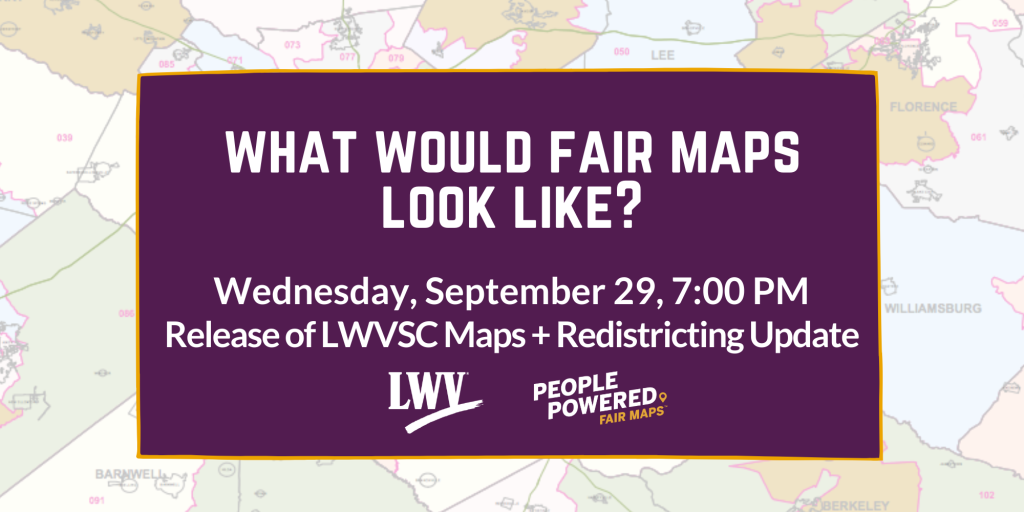Here’s the release of our recommended redistricting criteria PLUS don’t miss another important announcement at the end of this post!
Ideally, legislators have no role in drawing the districts that they hope to represent. Drawing their own lines allows them to choose their voters instead of allowing voters to choose their representatives. However, the South Carolina General Assembly has shown no inclination to establish an independent redistricting commission and give up the power to protect themselves and their parties. Therefore, strict rules are critical to people-based redistricting.
South Carolina has very non-competitive legislative districts at present. In 2020, over half of SC State House seats were not contested by a major party candidate (www.SCVotes.gov), and of those that were, the average margin of victory is the highest in the nation. Analysis shows that this is not largely the product of a majority party skewing things in their direction, although that is certainly a factor. A greater effect exists because incumbents of both parties have protected themselves at the expense of voters by distorting district lines to give themselves friendly voters. This must change. It deprives us as citizens of a meaningful voice in our representative form of government, and it adds to the disabling polarization that afflicts our politics.
The League of Women Voters of South Carolina believes the criteria we present here – if adopted by legislative map drawers – would result in districts that better served the voters within them. Within our proposed structure, there would still be decisions to make, choices among multiple potential solutions. There is no one right answer. However, there would be guard rails to direct decision-making away from the self-interest of legislators and toward the interests of voters.
Readers are encouraged to review our criteria in detail here. Summarizing briefly:
Districts must:
- comply with the U. S. Constitution and the federal Voting Rights Act;
- achieve substantial population equality between districts; and
- be geographically contiguous.
Districts must NOT:
- be drawn to favor or discriminate against an incumbent, candidate, or party;
- be drawn to reduce competitiveness.
To the greatest extent possible, districts should:
- be geographically compact and avoid bizarre shapes;
- maintain and respect the geographic integrity of any municipality, county, or current voting precinct;
- consider communities of interest.
Some criteria are legally mandated, while others reflect decisions that must be made now to shape the foundation on which we will build our legislature in the next decade. Perhaps the most troublesome is that of communities of interest. This is too often a wild card, used to justify results that are desired for self-serving reasons. It is legitimate to consider factors including those that are economic, social, and cultural, and those that relate to governments including cities and counties. Media markets and lines of transportation and travel can be significant. However, these should not be allowed to serve as proxies for relationships with candidates or parties, with candidate residences, or with voting history.
Interested in seeing how using our criteria might affect the maps? Stay tuned! In the next few days we will release one version of how our criteria might have shaped the districts drawn in 2011, in contrast to those that were actually drawn and currently in use.
Lynn Teague, LWVSC VP of Issues and Action, authored this blog post.








You must be logged in to post a comment.